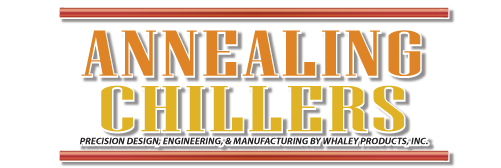Stress Relief Annealing
Stress relieving is performed at a lower temperature and the component can be air cooled.
Stress relieving as the name implies relies on a combination of heat and stress to produce solid diffusion that results in elastic stresses being relieved. Typically, depending on the state of stress these temperatures are well under the annealing temperature. For instance, I’ve been able to stress relieve fine wire at 375C in order to straighten it while the typical full annealing temperature was over 300C higher.
Stress Relieving consists of heating the steel to a temperature below the critical range to relieve the stresses resulting from cold working, shearing, or gas cutting. It is not intended to alter the micro-structure or mechanical properties significantly.also a process for making material softer. However stress relieving does not change the material properties as does annealing and normalizing
Stress relieving is done for the better performance of the metal so that when it comes under stress it bears the same and metal does not fail.
Stress relieving relives stresses- returns material to the strength revel prior to froming operation and increase the strength to levels greater than originally supplied.
a relatively low temperature process of reducing internal mechanicalstresses, caused by cold work, casting or welding.
Experience has shown us that very few machined plastic parts require annealing after machining to meet dimensional or performance requirements.
Generally speaking, most stock shapes are annealed after molding using a proprietary stress relieving cycle to minimize any internal stresses that may result from the manufacturing process. This assures you that the material will remain dimensionally stable during and after machining.
Machined-in stress can reduce part performance and lead to premature part failure. To prevent machined-in stress, it is important to identify the causes. Machined-in stress is created by:
- Using dull or improperly designed tooling
- Excessive heat –– generated from inappropriate speeds and feed rates
- Machining away large volumes of material –– usually from one side of the stock shape
To reduce the potential for machined-in stress, review the fabrication guidelines for the specific material. Recognize that guidelines change as the material type changes.
- Improved Chemical Resistance Polycarbonate, polysulfone, and Ultem® PEI, like many amorphous (transparent) plastics may be annealed to minimize stress crazing. Torlon® PAI also benefits from post machining annealing. Annealing finished parts becomes more important as machining volume increases. Annealing after machining reduces “machined-in” stresses that can contribute to premature failure.
- Better Flatness & Tighter Tolerance Capability Extremely close-tolerance parts requiring precision flatness and non-symmetrical contour sometimes require intermediate annealing between machining operation. Improved flatness can be attained by rough machining, annealing and finish machining with a very light cut. Balanced machining on both sides of the shape centerline can also help prevent warpage.
- Improved Wear Resistance Extruded or injection molded Torlon® PAI parts that require high PV’s or the lowest possible wear factor benefit from an additional cure after machining. This curing process optimizes the wear properties. Only PAI benefits from such a cycle.

